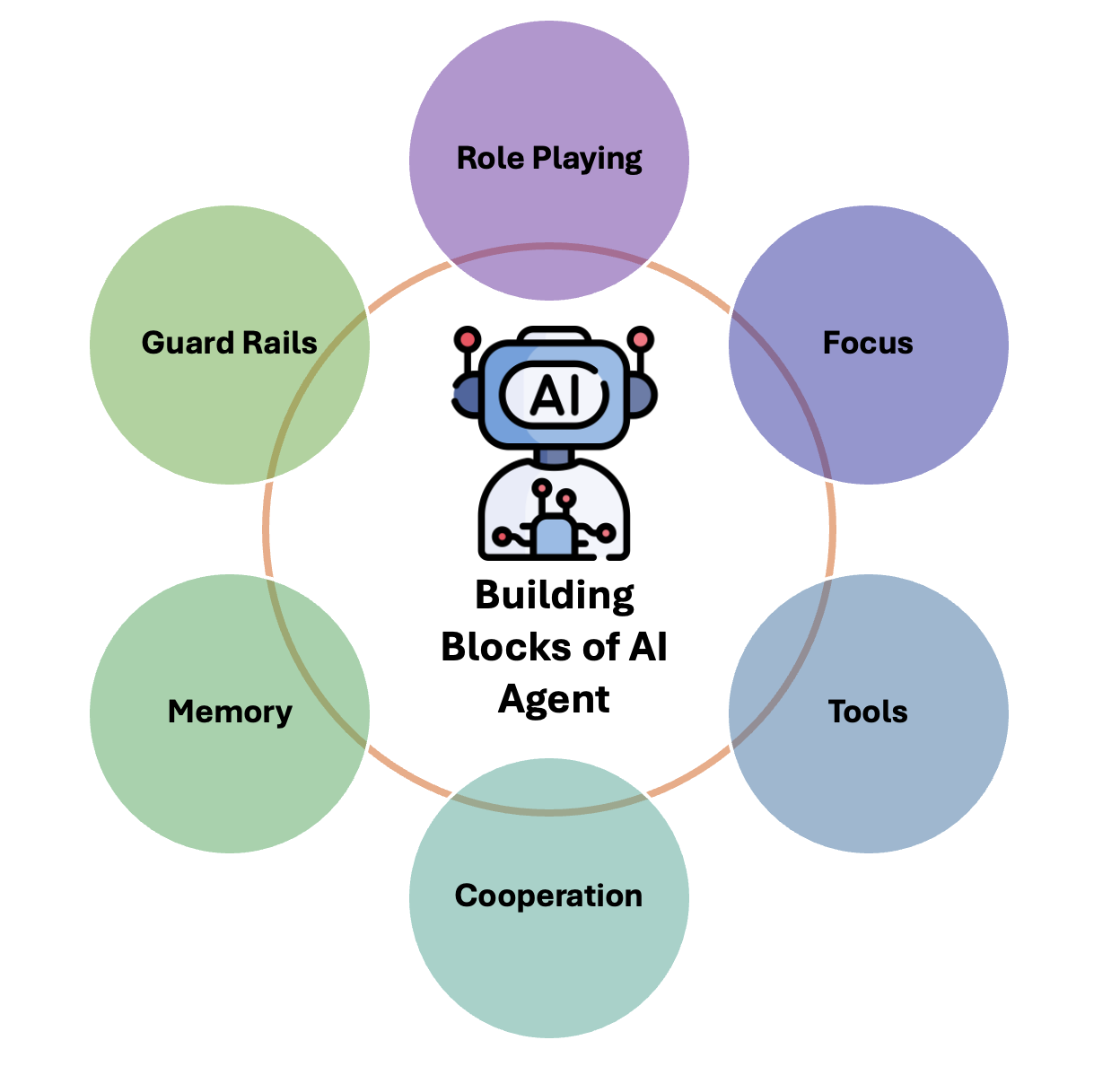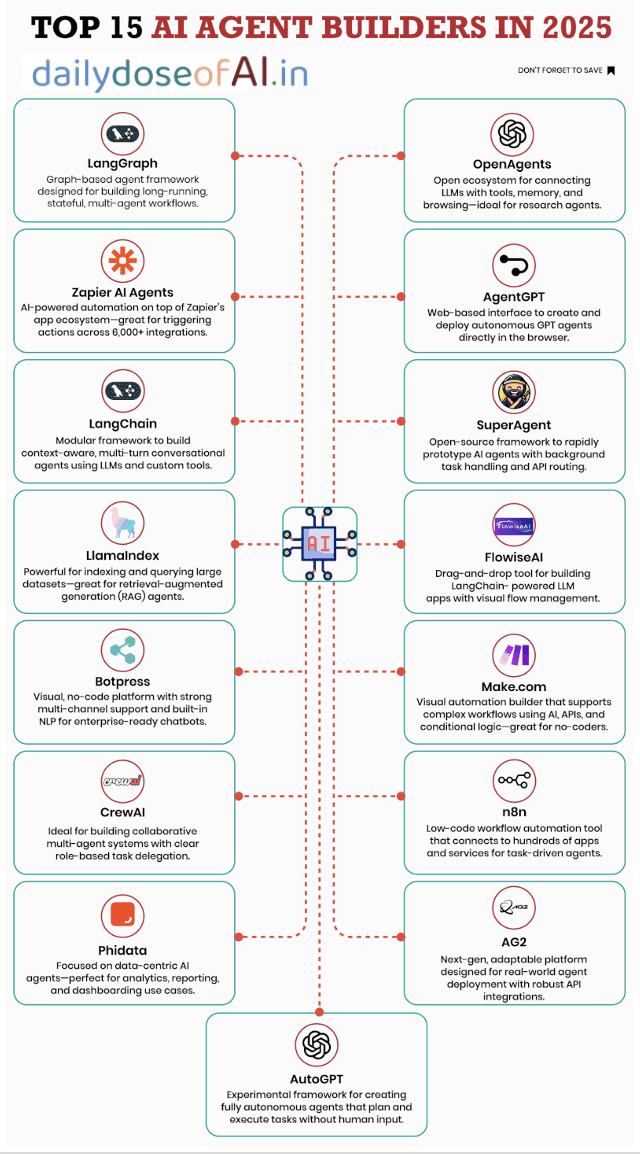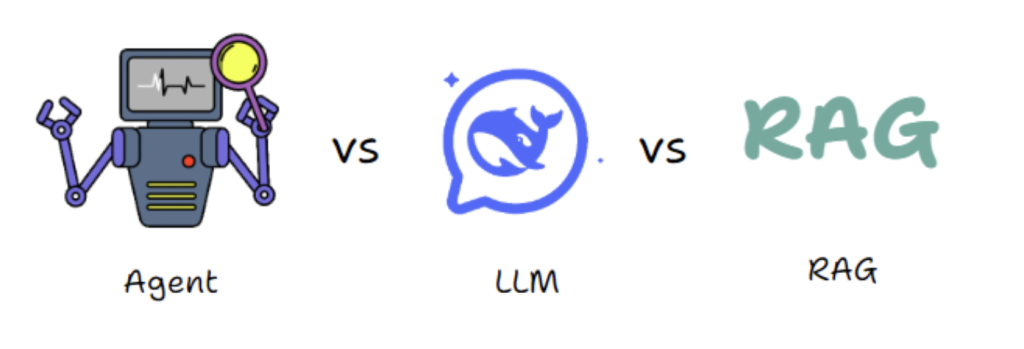
Let’s break it down with a simple analogy:
● LLM is the brain.
● RAG is feeding that brain with fresh information.
● An agent is the decision-maker that plans and acts using the brain and the tools.
Contents
LLM (Large Language Model)
An LLM like GPT-4 is trained on massive text data.
It can reason, generate, summarize but only using what it already knows (i.e., its training data).
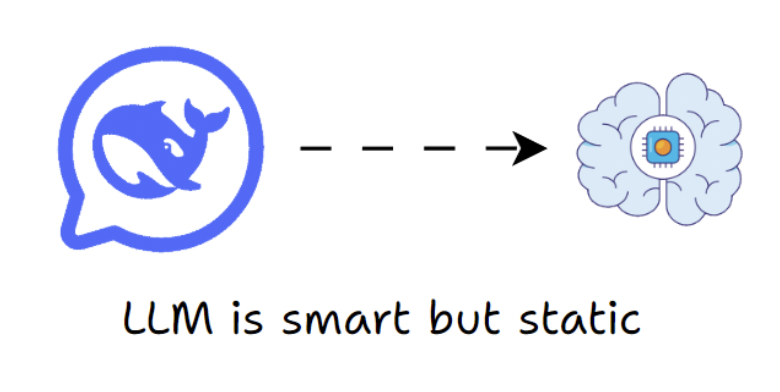
It’s smart, but static. It can’t access the web, call APIs, or fetch new facts on its own.
Definition:
A machine learning model trained on vast amounts of text to understand and generate human-like language.
Capabilities:
- Text generation (articles, code, stories, answers).
- Understanding and summarizing natural language.
- Translation and paraphrasing.
- Reasoning within the scope of training data.
Limitations:
- Knowledge is limited to training cut-off date (unless connected to live data).
- May produce confident but incorrect answers (hallucinations).
- Cannot take actions or access external systems on its own.
Use cases:
- Chatbots and virtual assistants.
- Creative writing and content drafting.
RAG (Retrieval-Augmented Generation)
RAG enhances an LLM by retrieving external documents (from a vector DB, search engine, etc.) and feeding them into the LLM as context before generating a response.
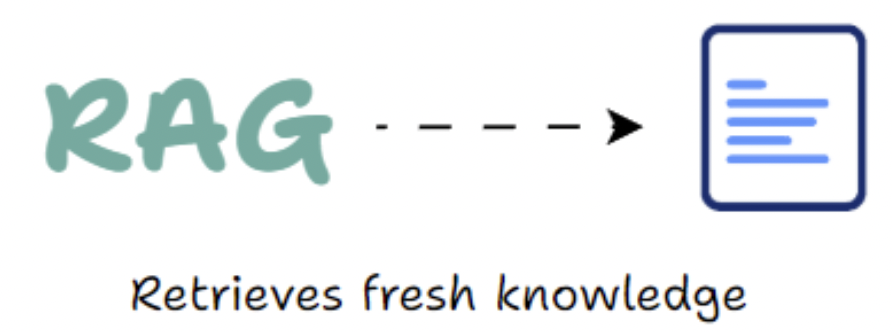
RAG makes the LLM aware of updated, relevant info without retraining.
Definition:
A method where an LLM is paired with a retrieval system to fetch relevant, up-to-date, or domain-specific information before generating a response.
Capabilities:
- Answers with grounded and fact-based information.
- Accesses private or real-time data sources (databases, APIs, document repositories).
- Reduces hallucinations by referencing actual content.
Limitations:
- Dependent on the quality of the retrieval system.
- Needs good document indexing and search algorithms.
- Still relies on LLM for interpretation, so errors can occur if retrieved info is poor.
Use cases:
- Enterprise knowledge assistants.
- Legal, medical, or technical question answering.
- Customer support with product manuals and ticket history.
Agent
An Agent adds autonomy to the mix.
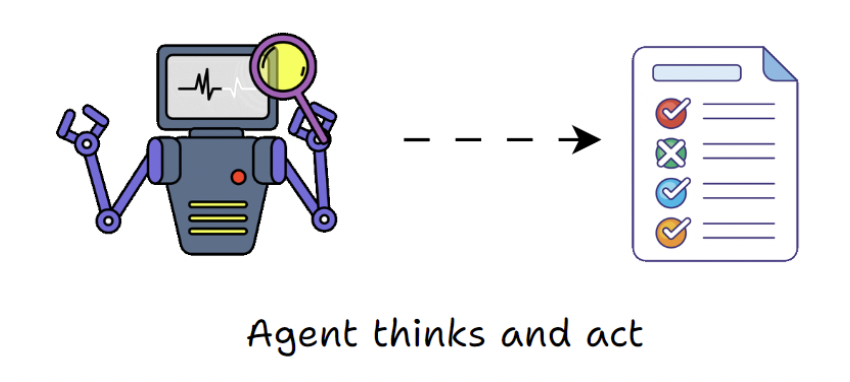
It doesn’t just answer a question—it decides what steps to take:
Should it call a tool? Search the web? Summarize? Store info?
Definition:
An AI system that uses an LLM (and optionally RAG) plus additional logic to plan, decide, and take actions toward a goal without step-by-step instructions from a human.
Capabilities:
- Multi-step reasoning and decision-making.
- Tool usage (APIs, databases, search engines, software).
- Autonomous task execution (monitoring, scheduling, purchasing, reporting).
- Can loop: check results → adjust plan → act again.
Limitations:
- Complexity in design, testing, and guardrails.
- Potential for unintended actions if not well-constrained.
- Requires strong observability and safety measures.
Use cases:
- Automated research agents.
- AI project managers.
- Workflow automation across systems.
- Personal assistants that act in the real world (e.g., booking travel, generating reports, running scripts).
Side by SIde Comparison
An Agent uses an LLM, calls tools, makes decisions, and orchestrates workflows just like a real assistant.
| Concept | What it is | Main Role | Key Capability | Example |
|---|---|---|---|---|
| Agent | An AI that can decide and act toward a goal using tools, data, and reasoning loops. | Do the work | Plans steps, chooses tools, executes actions, adapts to results. | “Book me a flight and hotel for tomorrow” → Agent searches flights, compares prices, books tickets. |
| LLM (Large Language Model) | A trained model that generates and understands text based on patterns in huge datasets. | Think & talk | Answers questions, writes content, explains concepts, but doesn’t act by itself. | ChatGPT answering “What is quantum computing?” |
| RAG (Retrieval-Augmented Generation) | An approach where the LLM fetches relevant data from an external source before answering. | Think with facts | Retrieves up-to-date or domain-specific info to ground answers. | Asking “Summarize today’s market news” → RAG fetches news from a database, then LLM writes the summary. |
Conclusion

LLM = The brain (thinks, speaks).
RAG = The brain + a research library (thinks with real, fresh data).
Agent = The brain + library + hands & legs (thinks, gathers info, and acts).


